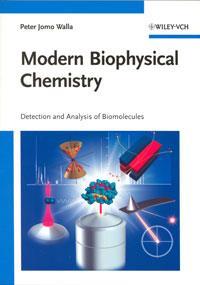This new book gives a nice introduction to current aspects of the interface between physical chemistry and molecular biology
Modern biophysical chemistry: Detection and analysis of biomolecules
Peter Jomo Walla
Weinheim, Germany: Wiley-VCH 2009 | 301pp | ?39.95 (SB)
ISBN 9783527323609
Reviewed by Alan Cooper
The interface where physical chemistry meets molecular biology presents exciting challenges for both disciplines, and this new book gives a nice introduction to some current aspects.

Biophysical chemistry dates back at least to 1958 with the classic, now technically antique Biophysical chemistry , by Harvard chemists John Edsall and Jeffries Wyman.
Fifty years on, and we should expect to see significant advances, as indeed exemplified here. Taking advantage of recent developments, especially in optical and electronic technologies, often driven by the need for enhanced sensitivity and applicability to biomedical/pharmaceutical R&D, we now have a wide range of techniques for studying the structure and function of biological macromolecules and their detection at almost homoeopathic levels. Walla gives a thorough and authoritative account of the current situation, focusing almost entirely on spectroscopic methods.
The book is strong on the basics, with appropriate treatments of fundamental molecular spectroscopy leading on to more recent application in single-molecule manipulation and analysis. The author’s research expertise in this area underpins a good selection of illustrative examples, with a nice range of problems accompanying each chapter (answers apparently to be available online - though not at time of writing).
But perhaps the choice of title is a little unfortunate. The coverage here is not quite as comprehensive as the title might suggest, omitting, for example, any mention of widely used non-spectroscopic techniques such as microcalorimetry or analytical ultracentrifugation. And any ’modern’ text is unlikely to remain so for very long, especially in such a rapidly developing field. However, these are minor quibbles, and I commend this book as a fine introduction for more physically oriented bioscientists or biologically inclined physical chemists at the senior undergraduate/graduate level, or beyond.












No comments yet